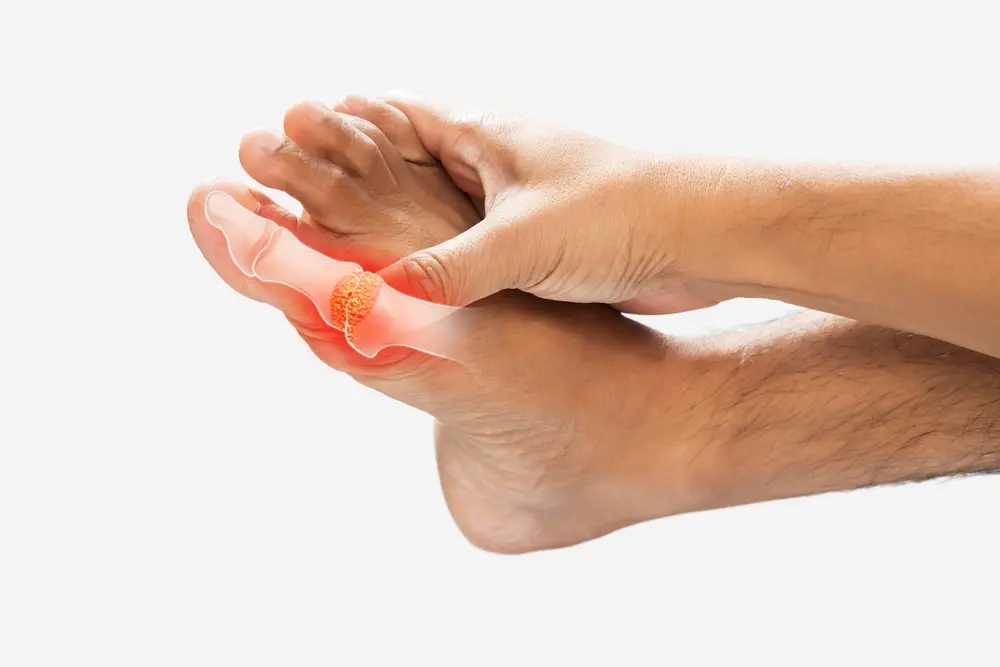
A healthy liver produces bile, which helps with digestion and overall body function. Bile, a greenish-yellow fluid, flows freely through bile ducts to the small intestine to break down fats and facilitate the absorption of nutrients like vitamins A, D, E, and K. This seamless process maintains digestive health and overall well-being. However, conditions like primary sclerosing cholangitis (PSC) and primary biliary cholangitis (PBC) disrupt bile flow and lead to complications like cholestatic pruritus.
Cholestatic pruritus is a type of itching sensation due to impaired bile flow in conditions like PSC and PBC. Normally, bile produced by the liver flows through bile ducts to the small intestine, aiding digestion and nutrient absorption. However, in PSC and PBC, this flow is disrupted due to inflammation, scar tissue, or damage to the bile ducts.
As bile flow becomes impaired, bile acids accumulate in the bloodstream. These accumulated biles trigger various neurological and immunological responses, leading to the sensation of itching. The itching is usually intense, and those who experience it describe it as maddening.
Cholestatic pruritus typically affects the skin all over the body and worsens at night. It can be so severe that it disrupts sleep and significantly impacts your quality of life.
The primary cause of cholestatic pruritus w/ PSC or PBC is chronic liver disease that happens when bile blockage in the biliary system or the liver cells fail to secrete bile. In PSC, inflammation scars and narrows the bile ducts, thereby obstructing bile flow. In PBC, damage to the small bile ducts within the liver disrupts the normal flow of bile. When bile flow is impaired, bile acid and Lysophosphatidic acid accumulate in the bloodstream, leading to systemic effects, including pruritus.
Apart from PSC and PBC, several other diseases and conditions can cause cholestatic liver disease, leading to cholestatic pruritus. Some of these include:

Cholestatic liver disease can cause various symptoms that affect your body's digestion and overall well-being. Here are some common side effects of the condition:
Diagnosing cholestatic pruritus involves a few steps:
First, doctors look for symptoms like intense itching, especially at night, and examine the skin for any signs of scratching or irritation. They'll also ask about any underlying liver conditions or other health issues you might have.
Next, they may order blood and liver function tests to check liver function and levels of bile acids in your blood. These tests help determine if there's a problem with bile flow in your liver. Sometimes, additional tests like imaging studies (like computed tomography) or a liver biopsy might be needed to get a clearer picture of what's going on inside your liver.
Once all the information is gathered, your doctor will be able to make a diagnosis of cholestatic pruritus and work with you to develop a treatment plan to manage your symptoms and address any underlying liver issues.

Treating cholestatic pruritus can be a bit tricky because it involves dealing with the underlying liver condition that's causing it. So, the first step is to treat whatever's going on with your liver. This might involve procedures to clear any blockages in the bile ducts or stopping medications that could be causing the problem.
If your itching is mild, you might find relief by using moisturizers or lotions. These can help soothe the itchiness and keep your skin hydrated.
But if those simple measures don't cut it, your doctor might prescribe cholestyramine. It's a resin medication that works like a sponge, soaking up excess bile in your body and helping to get rid of it.
If cholestyramine doesn't do the trick, your doctor might consider giving you a medication called rifampicin, which works to relieve the symptoms by lowering lysophosphatidic acid levels. However, the adverse effects, like liver and kidney issues, may reduce its effectiveness in people with liver disease.
There are also drugs called opioid antagonists that can block specific receptors in your body involved in the itch sensation. If you are pregnant and are itching because of hepatic cholestasis of pregnancy, your doctor may recommend ursodeoxycholic acid (UDCA), which helps improve bile flow and can also reduce itching.
In more severe cases, your doctor might suggest UV light therapy, which involves exposing your skin to a specific type of light. This can sometimes help ease the itching. And if things are really serious and you're dealing with end-stage liver disease, your doctor might talk to you about the possibility of a liver transplant. It's a big step, but it can be a life-saving option for some people.
Everyone's situation is different, so it's essential to work closely with your healthcare provider to determine the best treatment plan for you. They'll consider things like the severity of your symptoms and any other health conditions you might have to devise a plan that works best for you.
There have been exciting advances in treating cholestatic pruritus in recent years thanks to ongoing research and clinical trials. Clinical trials test new therapies and help researchers explore innovative treatments, improve existing therapies, and ultimately enhance the quality of life for people affected by cholestatic pruritus.
Check out Science 37 clinical trials to learn more about clinical trials for cholestatic pruritus or other liver-related conditions. Science 37 takes a decentralized approach to clinical trials, making participation more accessible and convenient for people across diverse geographical locations. Visit our website to learn more about current trials and find out how you can get involved in advancing medical research and improving healthcare outcomes for everyone with this condition.


